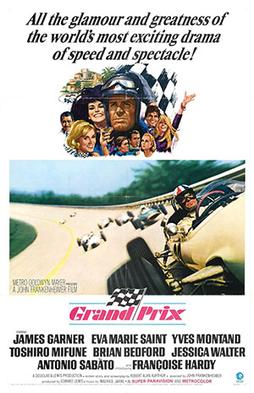
Detective fiction is a subgenre of crime fiction and mystery fiction in which an investigator or a detective—whether professional, amateur or retired—investigates a crime, often murder. The detective genre began around the same time as speculative fiction and other genre fiction in the mid-nineteenth century and has remained extremely popular, particularly in novels. Some of the most famous heroes of detective fiction include C. Auguste Dupin, Sherlock Holmes, and Hercule Poirot. Juvenile stories featuring The Hardy Boys, Nancy Drew, and The Boxcar Children have also remained in print for several decades.

A chauffeur is a person employed to drive a passenger motor vehicle, especially a luxury vehicle such as a large sedan or a limousine.

The Canary Trainer: From the Memoirs of John H. Watson is a 1993 Sherlock Holmes pastiche by Nicholas Meyer. Like The Seven Percent Solution and The West End Horror, The Canary Trainer was published as a "lost manuscript" of the late Dr. John H. Watson. In "The Adventure of Black Peter", an original Arthur Conan Doyle Holmes story from 1904, Watson mentions that his companion recently arrested "Wilson, the notorious canary-trainer, which removed a plague-spot from the East-End of London." This Wilson is not related to the eponymous character of Meyer's novel. Meyer's "trainer" is Erik, the principal figure of Gaston Leroux's 1910 novel The Phantom of the Opera. It is from this unchronicled tale that The Notorious Canary Trainers take their name.

A coachman is an employee who drives a coach or carriage, a horse-drawn vehicle designed for the conveyance of passengers. A coachman has also been called a coachee, coachy,whip, or hackman.

Grand Prix is a 1966 American sports drama film directed by John Frankenheimer, produced by Edward Lewis, and written by Robert Alan Aurthur with uncredited story contributions by Frankenheimer and rewrites by William Hanley. It stars an international ensemble cast, including James Garner, Eva Marie Saint, Yves Montand, Brian Bedford, Jessica Walter, Françoise Hardy and Antonio Sabàto. Toshiro Mifune has a supporting role as a race team owner, inspired by Soichiro Honda. The picture was photographed in Super Panavision 70 by Lionel Lindon, and presented in 70mm Cinerama in premiere engagements. Its unique racing cinematography is one of the main draws of the film.

"The Yellow Wallpaper" is a short story by American writer Charlotte Perkins Gilman, first published in January 1892 in The New England Magazine. It is regarded as an important early work of American feminist literature for its illustration of the attitudes towards mental and physical health of women in the 19th century. It is also lauded as an excellent work of horror fiction.

Hot Wheels: AcceleRacers is a 2005 computer-animated series of four films produced by Canadian company Mainframe Entertainment, which also produced the television series ReBoot. Available on DVD and VHS, it has also been shown on Cartoon Network.

A Wild Sheep Chase is the third novel by Japanese author Haruki Murakami. First published in Japan in 1982, it was translated into English in 1989. It is an independent sequel to Pinball, 1973, and the third book in the so-called "Trilogy of the Rat". It won the 1982 Noma Literary Newcomer's Prize.

Sherlock Holmes has long been a popular character for pastiche, Holmes-related work by authors and creators other than Arthur Conan Doyle. Their works can be grouped into four broad categories:
"A Study in Emerald" is a short story written by British fantasy and graphic novel author Neil Gaiman. The story is a Sherlock Holmes pastiche transferred to the Cthulhu Mythos universe of horror writer H. P. Lovecraft. Gaiman describes it as "Lovecraft/Holmes fan fiction". It won the 2004 Hugo Award for Best Short Story. The title is a reference to the Sherlock Holmes novel A Study in Scarlet.

Perkins Engineering was a team contesting the Australian V8 Supercar Championship Series, operating as an active racing team between 1986 and 2008. From 2009 onwards, the involvement of Perkins Engineering in the championship wounded back into a supply relationship with the newly formed Kelly Racing.

Traditionally, the canon of Sherlock Holmes consists of the 56 short stories and four novels written by Sir Arthur Conan Doyle. In this context, the term "canon" is an attempt to distinguish between Doyle's original works and subsequent works by other authors using the same characters.

Betrachtung is a collection of eighteen short stories by Franz Kafka written between 1904 and 1912. It was Kafka's first published book, printed at the end of 1912 in the Rowohlt Verlag on an initiative by Kurt Wolff.

Sir Arthur Ignatius Conan Doyle was a British writer and physician. He created the character Sherlock Holmes in 1887 for A Study in Scarlet, the first of four novels and fifty-six short stories about Holmes and Dr. Watson. The Sherlock Holmes stories are milestones in the field of crime fiction.

John H. Watson, known as Dr. Watson, is a fictional character in the Sherlock Holmes stories by Sir Arthur Conan Doyle. Along with Sherlock Holmes, Dr. Watson first appeared in the novel A Study in Scarlet (1887). "The Adventure of Shoscombe Old Place" (1927) is the last work of Doyle featuring Watson and Holmes, although their last appearance in the canonical timeline is in "His Last Bow" (1917).

Otto Merz was a German racing driver, chauffeur and mechanic. He was a driver in the motorcade during the 1914 assassination of Archuduke Franz Ferdinand and later won the second running of the German Grand Prix in 1927. He died in a crash during practice for the 1933 Avusrennen in a modified Mercedes SSK on 18 May 1933.

Jesus' Son is a collection of short fiction by Denis Johnson published in 1992 by Farrar, Straus & Giroux. A short story cycle comprising 11 pieces, Jesus' Son is Johnson's most critically acclaimed and popular literary effort, and the work with which Johnson is most identified. In 1999, it was adapted into a film of the same name by Elizabeth Cuthrell, David Urrutia, and Oren Moverman, directed by Alison Maclean.

The Narrative of John Smith (2011) is a novel written in 1883 by Arthur Conan Doyle, published posthumously by The British Library. In a work of narrative fiction, Doyle writes from the perspective of a middle-aged bachelor named John Smith recovering from rheumatic gout. Unlike his later work in detective fiction, fantasy, and science fiction, this novel unfolds through a series of tangential, essay-like thoughts stemming from observations on everyday life. The subjects are of a “personal-social-political complexion”.

"Fifty Grand" is a short story by Ernest Hemingway. It was first published in The Atlantic Monthly in 1927, and it appeared later that year in Hemingway's short story collection Men Without Women.
The Great Shadow, also known as The Great Shadow and other Napoleonic Tales, is an action and adventure novel written by Sir Arthur Conan Doyle. It was published in 1892 in J.W. Arrowsmith’s Bristol Library. The novel takes place in the Napoleonic era on the Anglo-Scottish border city called West Inch. The Great Shadow refers to Napoleon’s influence and his reputation that forms a shadow over West Inch.

















